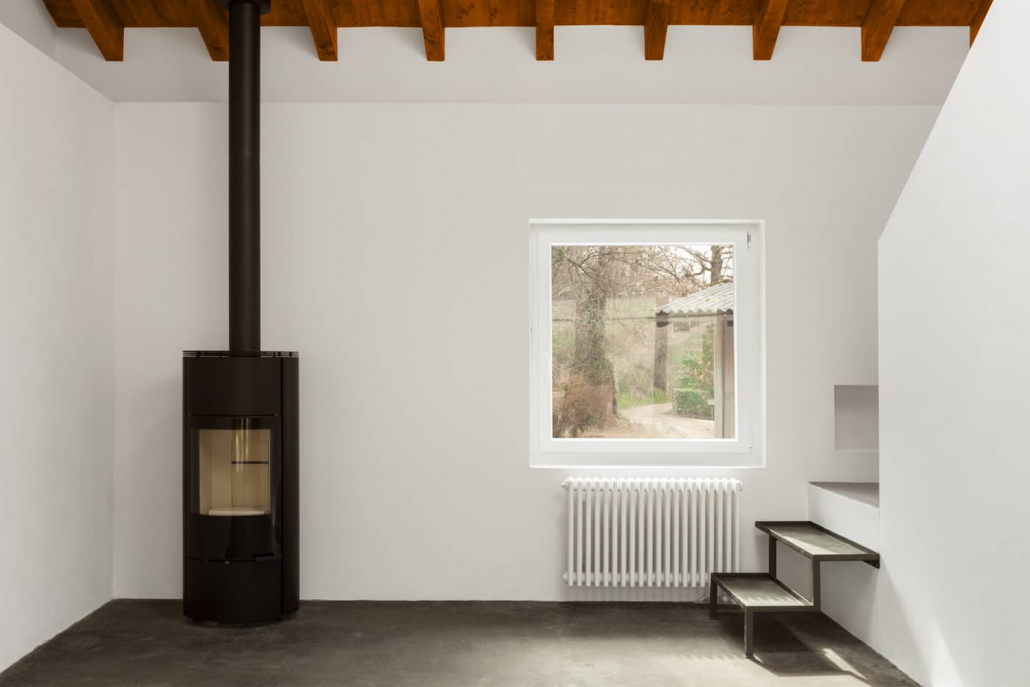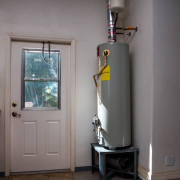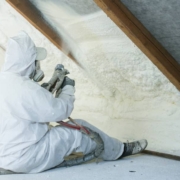Do Pellet Stoves Need A Chimney
Being a homeowner requires a lot of decisions to be made. If you feel the need to invest in an additional heat source for your home, make sure that you have all of the facts. Choosing between a fireplace with a chimney, an electric fireplace, or even a gas fireplace makes your decisions difficult. Now take into consideration that you can purchase a pellet stove. Pellet stoves are very nicely made and can range in costs of affordability to very pricey, depending on the size and design that you choose. However, your biggest decision will be understanding if you need to add a vent to your wall or if you have an old chimney you could use it. Do pellet stoves need a chimney? No, they do not need a chimney, but they do need a vent. You can use an old chimney if available.
Let’s take a look below at what’s involved.
What Is A Pellet Stoves
Believe it or not, a pellet stove is exactly what it sounds like. A stove that allows pellets made from recycled sawdust and wood shavings to be burned for heat. If you have ever seen rabbit food, then you would know what a pellet looks like. Your eco-friendly pellets are cheap and easy to manufacture. In addition, they are environmentally friendly, because they have a low pollution rate when they burn. Also, pellet stoves are more efficient than natural gas, propane, oil, or coal stove, and less efficient than an electric furnaces. The good thing is that you can create as much heat as you would like and can afford with your pellet stove.
How Do I Install One
Unfortunately, completing this installation will likely require a professional. In most cases, you will need to have some type of vent installed in order for the smoke from the fire to exit out of the home. Always remember, it is cheaper to hire a professional than it is to have a fire and water damage team come in and clean your home up. Let’s take a look at what those steps would be for installation:
- Hire a professional – local codes need to be followed when installing a pellet stove. This is a two-person job as the pellet stove can be very heavy. Hiring a professional to run the ventilation and install the pellet stove per the manufacturer is key.
- Install a vent – planning out where the ventilation will go is vital to a smooth install. Always look to install then vent through your exterior wall. Running it up and through the roof could be more difficult. Hiring a professional can get this project done properly and without additional damage.
- Keep your distance – always install a pellet stove one to two inches from the back wall. You can go out a little further from the wall to make room for your ventilation pipe. This is good if you are looking to hide your ventilation pipe and keep it more horizontal, than vertical.
- Install hearth pad – a noncombustible hearth pad is needed for the pellet stove. Get it from the pellet stove dealer or make one yourself with the concrete backer board.
- Read the manufacturers manual – use a stud finder to locate your wall studs. This allows you to know what part of the wall you can cut into. Make sure that you cut the dry wall with a utility knife to confirm this. Now you have access to the exterior wall and can make a cut for your ventilation pipe and exhaust.

Do I Need A Chimney
Luckily for you, the pellet stove does not require a chimney. However, if you have a chimney, you can use it for venting your new pellet stove. Always remember that venting a pellet stove can be done by using the closest wall and horizontally venting out through the wall. Additionally, this would be the fastest way to remove all smoke from your pellet stove. Let’s look at some regulations to consider before we get our horizontal ventilation installed.
- Check local building codes – exhaust from stoves is often required to extend several feet away from any nearby window or door.
- Consider where the exhaust goes – before installing a horizontal vent, you need to ensure that it isn’t going to be directed at people walking by on a sidewalk. Keep in mind that the best approach is a minimum of 7 feet above the ground. Doing this will keep the exhaust from blowing onto someone outside your home.
- Air intake or air inlet pipe – your exhaust vent should be at least 3 feet above any air intake or air inlet pipes in your home. You don’t want the smoke/air recirculating into the home.
- Protector Plate – it is recommended that you use a protector plate to ensure no discoloration of your interior walls. Also, ensure that the vent extends at least 6 inches from the wall’s exterior.
What Else Should I Know
No matter how you approach the ventilation of your pellet stove, keep in mind that it is a must. Always use a flue that can be found within a masonry chimney, installed within a home, or out and up an outside wall. Also, a direct vent for fresh air is not typically required for a pellet stove. With that being said, a ventilation system is needed with a good quality flue, so that the dirty air can be vented outside.
How Much Do They Cost
Before deciding if you can use a pellet stove in your home, make sure you plan for the price. The national average cost of a pellet stove ranges from $3,000 to $6,000. The higher the price the nicer and larger the pellet stove unit. Keep in mind that this does not include the cost of installation. You might have to install a vent or retrofit the vent pipe to a chimney to safely use your pellet stove. The installation cost for a free-standing unit can range from $200 to $800, while a wall-mounted pellet stove can cost you $500 to $1,200.
Other Recommended Maintenance
Now that you have installed your pellet stove, make sure to read up on the types of wood and pellets you are allowed to burn in it. The pellets that you purchase can be made from recycled wood, so read the labels before purchasing to make sure that the wood type is ok. In some cases, certain woods are better than others. Take some notes from what you would burn in a wood-burning fireplace. Getting the longevity out of the right wood pellet is key to saving money. Always read the labels when making your fire-burning wood pellet selection.
Getting your pellet stove installed can be an exciting project. Keep in mind that maintenance is needed for your pellet stove and always look into various ways that stone fireplaces are cleaned. A stone fireplace could be cleaned in the same manner as your pellet stove. Also, read the manufacturer’s recommendations for how to keep a pellet stove clean. This can save on your maintenance and the time that it might take you to clean the stove.
Lastly, reading up on the maintenance of a fireplace gives you an idea of what to do with your pellet stove. Always remember that fireplaces must be cleaned on a regular maintenance schedule. This can keep your home from having major smoke damage or even a fire.
N

When Do I Call A Professional
Calling on a professional to install your pellet stove is highly advised. Hire a professional contractor who understands the building codes for stove ventilation. Before purchasing and installing a pellet stove, check with your local home inspection team. Always remember that your local home inspection team can help you find a spot in your walls for pellet stove ventilation. In addition, the home inspection team can inspect your home for any other issues. Also, they can recommend a reputable professional contractor.
Conclusion
When looking to purchase and install a pellet stove, planning for the necessary chimney or ventilation hookup is vital to you enjoying your stove. Knowing what your pellet stove is capable of allows you to stress less and sleep better at night. Have peace of mind that your home will be warm. Heartland Home Inspections are happy to come out and provide you with some pellet stove maintenance advice and refer a few quality professionals. Heartland Inspections services the great Minneapolis St. Paul and surrounding areas.











